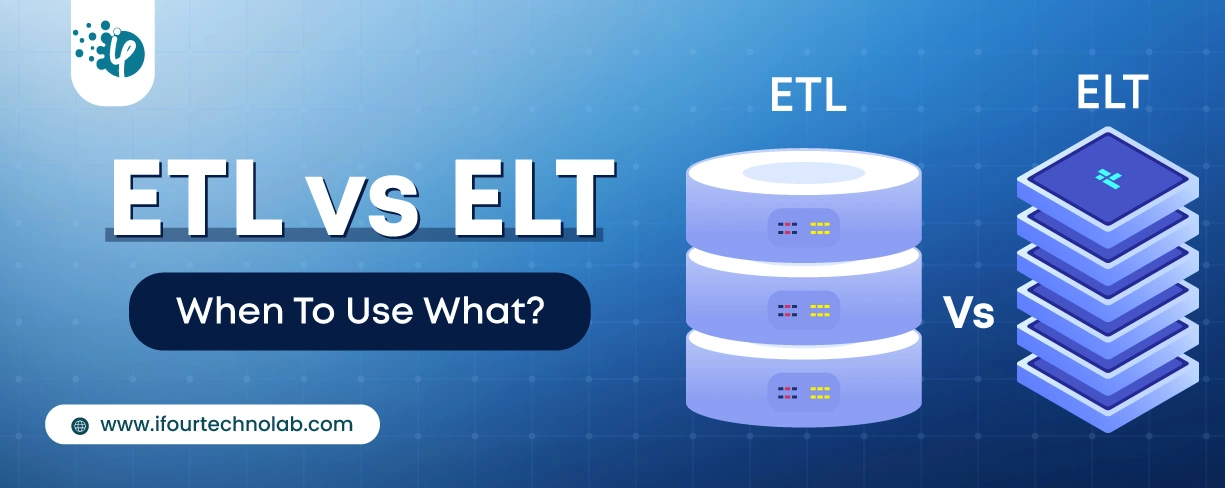ETL vs ELT: Key Differences, Benefits & Use Cases Explained
It's amazing to see how Data teams today are racing ahead - moving from traditional warehouses to cloud-native platforms, lakehouses, and real-time architectures. But in this rush,...
Listening is fun too.
Straighten your back and cherish with coffee - PLAY !

Time appears to be racing at an incredible rate in the ever-evolving field of technology, leaving us with surprises. It feels like just yesterday we were delving into the exciting landscape of Node 19, relishing its impeccable updates. Yet, in the blink of an eye, the news of Node v20's arrival echoes through the digital corridors, catching us off guard.
Following in the footsteps of Node 19, the Node.js team and community continue to push the boundaries with their latest innovations and updates all across the world. The Node.js community has launched Node.js version 20 to make Node.js app development easier.
In this blog post, we will look at what's new in Node 20, as well as some significant changes. In addition, we will examine the Node 20 progression for both growth ecosystems and entrepreneurs.
Node.js currently powers millions of apps and websites. Node.js continues to dominate the development environment because of its tremendous community support and the unrivaled NPM, the largest open-source package repository with over one million items.
Let's take a look at the most recent Node.js v20 modifications.
Extra stability is offered by custom ESM loader hooks. The loading of ECMAScript modules can be precisely controlled by developers using these hooks. This makes it possible for them to manage complex situations and prevent potential problems. Developers can manage errors, resolve dependencies, and conduct additional transformations with the help of custom ESM loader hooks. This degree of customization guarantees a dependable and stable module loading mechanism, enhancing the overall stability of the system or application.
A tool or framework called a stable test runner is used in creating software to automate test execution and make the reliability and security of a software application. It provides a framework for creating, planning, and running test cases, collecting, and providing test data, and easily controlling the testing process.
The Permission Model is a fresh, prototype Node.js feature. This allows programmers to modify access to resources such as file system operations, child process development, and worker thread growth all through program execution. When the -experimental-permission argument is used, it inhibits The API covering itself and has access to all permissions.
The import.meta.resolve function currently returns synchronously, according to browser actions. However, users can still define their loader manage hooks as synchronous or asynchronous functions based on their preferences. if the async resolve hooks are loaded, import.meta.resolve will still return synchronously in the application code.
Another great feature in the Node.js 20 version is the coercion and validation of Web Crypto API function arguments according to their WebIDL definitions, which is similar to the other implementations of the Web Crypto API and creates interoperability. The goal here is focused on compatibility with other JavaScript environments.
Ada, the latest version of the URL parser written in C++, has been included in Node.js v20 given to the contributions of Yagiz Nizipli and Daniel Lemire, which produced major improvements in URL parsing performance. The node:url upgrade builds the url.domainToUnicode and url.domainToASCII functions. The newest Ada 2.0 integration in Node.js 20 ensures increased performance than the previous version, Ada 1.0.4, and eliminates the ICU essential in URL hostname parsing.
Some widely used frameworks and libraries that are commonly compatible with Node.js include:
Express.js is a popular Node.js web application framework. It is well-known for its simplicity and adaptability. To add more, Express.js works well with multiple Node.js versions.
React is a well-known JavaScript library for creating user interfaces. It can be used in combination with Node.js for making server-rendered software or as a front-end library with other server-side frameworks.
Google created Angular, the intended front-end framework. It is typically used for creating large-scale applications. Angular can be used along with Node.js to build full-stack JavaScript applications.
Meanwhile, check out the comparative analysis of Angular, React, Vue, and Node to determine the best platform for your needs.
Vue.js is the latest JavaScript framework that is commonly utilized for developing user interfaces. It can be used along with Node.js to create server-rendered applications or with a front-end library with other server-side frameworks.
MongoDB is a popular NoSQL database that is frequently utilized alongside Node.js. The official MongoDB driver for Node.js is continuously maintained and supports different Node.js versions.
You may have heard of Serverless computing and its influence on bespoke software development . But how will it impact server-side programming when paired with Node.js? Let's have a look at it, but first, let's go over the fundamentals.
Serverless computing is an architectural approach in which code runs on the cloud without regard for hardware and software setup, safety, efficiency, or CPU idle expenses. It is a cloud computing growth that extends beyond technology to include the application environment. It indicates that nothing else is required to carry out the operation.
Serverless computing allows organizations to develop apps fast and efficiently without having to worry about the system that supports them. It means enterprises must respond quickly to changes in demand and ensure that their applications are always available.
The projection presents the serverless system's demand, growth, and efficiency. Also, the serverless architecture gives practical advantages such as agile development, reduced expenses (as compared to traditional systems), and flexibility.
Serverless Node.js would be an excellent improvement because Node.js is event-driven. This style is known for its fast responses, particularly for sensor testing, changes to the database, and even real-time user interaction. With a serverless platform and Node.js, users can develop advanced and scalable apps.
Node.js is presently the most widely used serverless programming language. This has drawn a large number of individuals to Node.js development, prompting companies to hire Node developers.
There are various benefits to this combination for developers, but they must be careful of several features of the Node.js environment in connection to serverless.
It is easier to set up servers in the case of a Node.js application, but it is more challenging to comply with message processing in the background. Managing backend processing might turn into a difficult task.
There are now utilities that deal with processing tasks in the background that are related to framework requirements. While HTTP request messages can be used to scale, when combined with queues, it could be an unsafe solution.
Serverless is an efficient solution for meeting the need for flexibility while maintaining features on schedule. In this case, you have no means to pay for the system, but you need to pay for the execution only.
a combination of true serverless development, developers only require giving their time and resources to implement the logic of business.
Infrastructure tasks will be managed by the serverless suppliers. This greatly expands the talent pool since a developer with no experience working on huge cloud infrastructure can now just focus on the logic of business.
There is no doubt that the combination of serverless and Node.js development provides many new features. At the same time, developers must be alert to any issues and disadvantages.
In an overview, Node.js appear to be overriding many features provided in the webspace.
It is fair to assume that serverless will restore the old web layer method in the front end. However, this does not mean that front-end developers are immune to learning server understanding, network computer programming, or computer operating system understanding.
Serverless Development is growing in the industry, giving with it many possible shifts in development techniques. To keep up with this development approach and set it in adventure in your project, it is best to hire a remote development team that can build robust solutions for you in an affordable way.
Node.js updates often feature a combination of bug fixes, performance improvements, and safety updates. Security improvements try to fix issues that are possible to be used by attackers. These updates may contain secures for known security flaws, code integrity enhancements, or updates to requirements that fix issues.
When Node.js releases a new version, the release notes and changelog clarify the changes made in that version. It is advised that you read these notes to understand the specific safety improvements and improvements provided for every version.
To remain up informed on the latest Node.js versions and security updates, read the official Node.j website (nodejs.org) frequently or connect to the Node.js security email list to get alerts on security alerts and upgrades.
Please keep in that the particulars of security updates and upgrades in Node.js v20 or later versions are subject to change according to the actual release and frequency beyond my knowledge termination time.
This brings us to the end of this Node.js blog. I hope you learned the essential updates and modifications followed from previous versions. Visit our blog for more useful posts.
In this blog, we have gone through Node v20's latest enhancements, investigating its compatibility with popular platforms, its far-reaching implications for serverless computing, the critical security updates it brings, and the major enhancements that pave the way for more efficient and robust development.
Node.js has once again proved to be a dynamic and future-perfect technology, meeting the requirements and goals of developers worldwide. The Node.js community continues to push the boundaries of what is possible with Node v20, helping developers to construct creative and scalable applications. As we embrace the new capabilities and enhancements provided by Node v20, we can look forward to an exciting future in the ever-changing field of JavaScript development.

It's amazing to see how Data teams today are racing ahead - moving from traditional warehouses to cloud-native platforms, lakehouses, and real-time architectures. But in this rush,...

Think about the last time CTOs spent most of their time fixing old systems. Updates were slow, servers were expensive, and adding new features took time. Now, things have changed....

According to HackerOne, fixing a security issue after software is released can cost 30 times more than fixing it during development. Today, CTOs take a different approach. Shift...